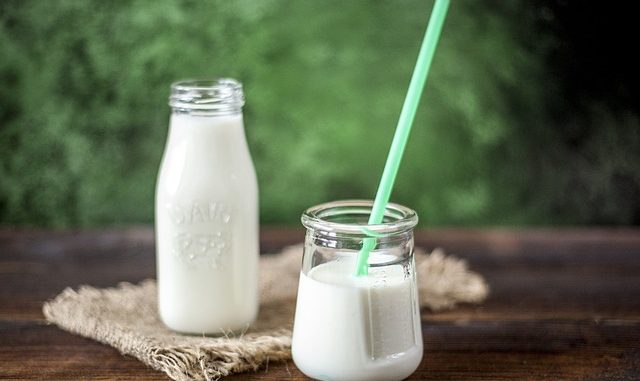
Dairy and dairy alternatives have been a topic of debate in recent years. While dairy has long been a staple in many people’s diets, there has been a growing interest in plant-based alternatives such as soy, almond, and oat milk. Consumers are becoming more health-conscious and environmentally aware, which has led to a shift in consumer perception towards dairy and dairy alternatives. However, closing the gap in consumer perception between the two options can be challenging, as it requires a multifaceted approach.
The Current State Of The Market For Dairy Alternatives
Take a look at the global market data from market research organizations such as Grandviewresearch.com and Marketsandmarkets.com. Lots of insights to be seen there on where the dairy alternatives market currently sits. The market size for dairy products throughout the world is currently valued at 481.1 billion USD (2019 data) whilst it is only a fraction of that figure, less than 5 per cent for dairy alternatives, valued at 22.6 billion USD (2020 data). There is still then a considerable and sizeable difference between these two types of product.
If you think of potential growth, then it is reckoned that the dairy alternatives market will grow 40.6 million USD by 2026 which represents a growth rate of over 10 per cent. Those market research reports though think that seismic changes are needed if dairy foods are ever to be knocked off their perch. The key drivers at the moment are those following a vegan diet or just adopting a healthy diet where they perceive dairy is not part of their lifestyle. There is also a considerable lactose-intolerant population but that inability to digest lactose is slowly waning.
Part of the growth in dairy alternatives may well be in the Asia Pacific region where there is a sizeable agricultural production base for plant-based foods. We are also seeing considerable growth in the sowing of soybeans still even though it is associated with wrecking forest ecosystems through habitat destruction. Nonetheless soybean is the largest segment in crop production whilst almond growing is the fastest growing. Both soy and almond are being used mainly for alternative milks in the dairy alternatives sector.
The issues that hamper growth in dairy alternatives are ones which often confront new concepts. The main restraint is commercial: the prices of all raw materials in this age are highly volatile and create considerable nervousness in producers and buyers. There is also limited consumer acceptance because they simply don’t trust plant-based dairy, it hasn’t the right taste appeal and there are still considerable nutritional issues in a less varied diet. One of the ways of addressing the latter issue is to overcome consumer’s limited awareness of the sector and what it offers.
Educating The Public
One of the ways to close the gap in consumer perception is through education. Educating consumers on the nutritional benefits and drawbacks of both dairy and dairy alternatives can help them make informed decisions about their diet. For example, dairy is a good source of calcium, protein, and vitamin D, but it is also high in saturated fat, which can contribute to heart disease. On the other hand, dairy alternatives such as soy milk are often fortified with calcium and vitamin D, and they are generally lower in saturated fat. By providing information on the amount of protein, fat, and vitamins in both options, consumers can make better-informed decisions about their diet.
The Taste Factor
Another way to close the gap in consumer perception is through taste. Taste is a major factor in determining consumer preferences. Brands that offer high-quality and delicious dairy alternatives that can match the taste and texture of dairy products can help to close the gap in consumer perception. For example, oat milk has become a popular dairy alternative because it has a similar creamy texture to dairy milk, and it is a good source of fiber.
NIZO, a research organization in the Netherlands have conducted strategic research on the flavour issues that surround plant-based proteins. There is a particular off-flavour in plant foods, especially the proteins which is associated with green and beany notes – that is hexanal. It is an aldehyde chemical that is found in all legume foods and highly characteristic of them. Pea proteins would be ideal as a dairy alternative but the uptake is hampered by high levels of hexanal. Nizo have been exploring ways to reduce hexanal by fermentation and so far they are demonstrating a reduction in the taste intensity from this compound. It’s a technique that can be used to reduce other off-flavours.
Brands that invest in research and development to improve the taste and texture of dairy alternatives can attract consumers who might otherwise choose dairy products.
Consumer Expectations
Consumers have particular expectations about food generally and for dairy alternatives to be able to compete with dairy generally means that roughly four attributes must be satisfied. Expectation can be viewed as a pyramid. The base is ‘Trust’ overlaid by ‘Product Performance’, then ‘Nutrition’ and finally at the apex, ‘Society’.
Trust in any product comes from making sure the dairy alternative meets all the key food safety regulations as well as ensuring the product looks similar to its dairy counterpart which engenders a sense of familiarity. As in all cases where products have attempted to be copies of others, it is obvious to say they should at least attempt to look familiar.
When it comes to product performance, the dairy alternative must have acceptable aroma and flavour and have a similar texture or mouthfeel. Most dairy products are used for their functional behaviours so the technical performance of a dairy alternative must match their dairy counterpart and possibly be even better. The type of applications to think of are being added to hot products as creamers, being fermentable, having foaming properties, being something that melts on toast like dairy cheese.
In terms of nutrition, all the dairy alternatives must have acceptable nutritional compositions and at least parity. The protein quality must be high and they must also score highly on the nutrient rich index. They also need to supply vitamins and minerals. It’s still a major concern for nutritionists that nutritional quality is not being adequately met and that dairy is still by far the best performer with regards to this important attribute.
Finally, it must satisfy general society wants. It must continue to be natural and sustainable. All the products should have a ‘clean-label’ as far as possible. They also need to generate a low carbon dioxide footprint and it’s one aspect which dairy alternatives have as an advantage to their dairy-based counterparts.
Marketing
Marketing can also play a significant role in closing the gap in consumer perception. Effective marketing can help to position dairy alternatives as a viable and attractive option. Brands can highlight the health benefits of dairy alternatives, their environmental sustainability, and their versatility in cooking and baking. There are so many attractive options especially in the sector for beverages and yogurts. Soy milk for example can be used in place of dairy milk in many recipes, and it is often used in vegan baking. By highlighting the versatility of dairy alternatives, brands can appeal to consumers who are looking for healthier and more sustainable options.
Price
Pricing is another important factor in consumer decision making. Cost can be a significant barrier to entry for consumers who are considering switching to dairy alternatives. Brands that offer dairy alternatives at a more affordable price point can attract consumers who might otherwise choose dairy products. For example, almond milk is often more expensive than dairy milk, but brands that offer competitive pricing can make it more accessible to consumers.
Getting Hold Of These Dairy Alternatives
Accessibility is also crucial in closing the gap in consumer perception. Making dairy alternatives more readily available in supermarkets and restaurants can help to increase their visibility and accessibility to consumers. For example, many coffee shops now offer a range of dairy alternatives such as soy, almond, and oat milk, which makes it easier for consumers to try these options. By increasing the availability of dairy alternatives, brands can encourage consumers to try them and make more informed decisions about their diet.
Innovation
Innovation is also key to closing the gap in consumer perception. Ongoing innovation and research can help to improve the taste and nutritional value of dairy alternatives. As such, it is important for companies to invest in research and development to stay competitive in the market. For example, some brands are now offering dairy alternatives that are fortified with additional vitamins and minerals, which can make them more appealing to consumers. By investing in innovation, brands can continue to improve the taste and nutritional value of dairy alternatives, which can help to close the gap in consumer perception.
In conclusion, closing the gap in consumer perception between dairy and dairy alternatives will require a multifaceted approach. Education, taste, marketing, pricing, accessibility, and innovation all play important roles in shaping consumer perception. By providing consumers with information on the nutritional value of these products will go some way to improving perception but it still remains an uphill struggle for the sector.


Leave a Reply